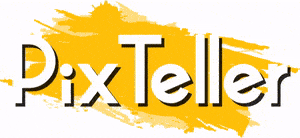How to Sell Your Design Ideas to Skeptical Clients
Most clients hire designers to achieve a specific business objective. So, competent designers tend to know what value their designs will bring. However, designers also need to convince skeptical clients that they're the right person for the job and that their ideas work.
 Grow your business by designing custom images with PixTeller image maker
Grow your business by designing custom images with PixTeller image maker
You stand a better chance of walking out of a pitch smiling if you craft your delivery with the mindset of a sales rep. Your goal is to gain the client's trust by demonstrating your expertise so that by the end of the meeting, the client shouldn't doubt you.
Here are some techniques to help you close the sale when dealing with skeptical clients.
-
1. Learn to show what value your designs bring
Your job as a designer involves finding out what the client needs and formulating a detailed plan on how you're going to solve their problems. Your sales pitch should include presentations and data to show what value your designs bring. An excellent presentation will help address a client's concerns before they raise them.
If you don't show the value you bring to the table, clients may be tempted to ask for a discount or cutbacks in deliverables to match their restricted budget. In most cases, compromising your design standards may compromise your quality of work as well.
Los Angeles sales training teaches people the importance of explaining what role their work plays in relation to the client's needs. Show your client you understand their pain points and prove your worth by presenting an intriguing pitch.
-
2. Listen more and talk less
While it's essential to be confident and express your value, it's also advisable to listen to your clients as they talk about their ideas, goals, and concerns. Listening will give you some insight into their fears and desires. Listening also shows respect and support. Acknowledge the client's point of view even if you don't agree.

Clarify your discussions by asking questions and mirroring the client's body language. Also practice active listening to make sure you're both on the same page.
Talking more than you listen during a sale typically indicates you're insensitive to the client's needs. Plus, if you stay observant, you're likely to pick up issues and opportunities revealed indirectly by the client. For instance, the client may at first try to avoid discussing delivery dates if they're under pressure to meet company deadlines.
-
3. Explain your reasoning
Initially, skeptical clients might not take your word for your design choices. You may just need to work a little harder to earn the client's trust and close the sale. You don't need a degree in design to have credibility. However, you'll have more leverage if you can explain the logic behind your design with the clarity of a design graduate.
Take time to let the client know your thought process. This shows you respect the client, and will in most cases earn you respect as well. When you care enough to explain your rationale, it builds trust. Sales training can teach designers how to gain trust by backing their work with third-party authoritative proof.
For instance, you could refer to previous designs on similar projects. You could also offer user experience findings that explain how design influences a user's decisions. Bring credible information that's relevant to your client's needs.
-
4. Ask questions that reveal the whole picture
Asking questions during sales calls can make your work as a designer easier. Ask your client about their users and the nature of their business, as well as the client's concerns, needs, and business objectives. These factors can give you a bigger picture. Being intensely curious can reward you during the design process.

Asking questions gives you more information, which you can use as leverage, especially when you need to win or make concessions. Sales trainers teach that it's wiser to concede based on the value you get in return. When making concessions, it's better to be well informed.
-
5. Know your prospect and anticipate their concerns
Students in design school learn to anticipate their clients' concerns. Client needs vary depending on the industries they belong to. It'll be easier to understand a client's business needs by looking at their target audience and research on the purchasing habits of their customers.

What are your client's main concerns? That's the question you need to answer by probing deeper and asking strategic and intelligent questions during talks. You're in a better position to sell your client on your design if you know more about them. If you can anticipate the client's needs, your resourcefulness can make it easier to develop a long-term sales plan.
Until next time, Be creative! - Pix'sTory made by Simon Beaufort
He's the Content Editor at Negotiations.com. We train global 500 companies' teams to negotiate better.
Recommended posts
-

How to Edit Pinterest Images and Make them Attractive?
Read More › -

Graphic Design vs Motion Graphics to Digital Marketing
Read More › -

Tips to Create Perfect Call to Action for Sales Conversion
Read More › -

Graphic Design vs Animations for Effective SEO Strategy
Read More › -

Make Your Own Animations Start From an Image Template
Read More › -

Video Email Marketing - How to Do It and Why You Need It
Read More ›
